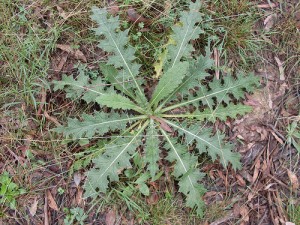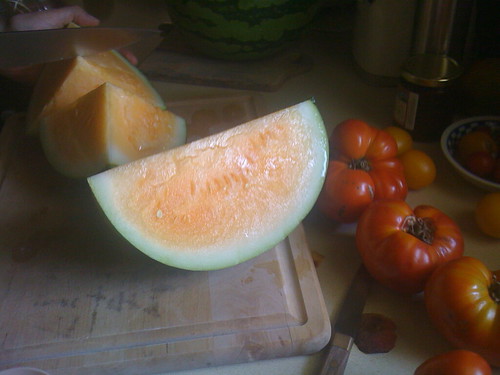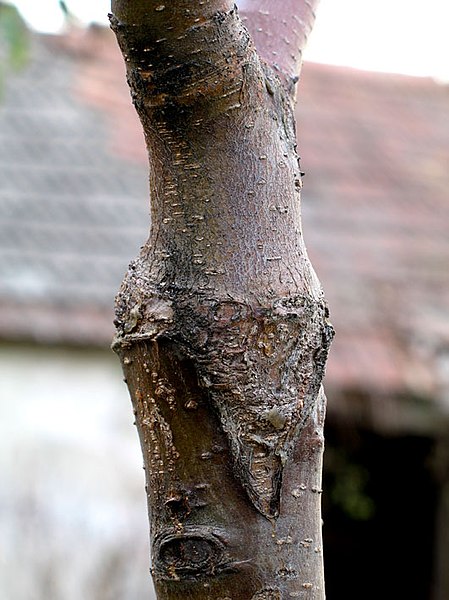Plant breeders can find natural resistance to pathogens. Some crops can be grown in regions where they have few or no natural insects attackers. But every crop with face the problem of weeds, other plants that threaten to steal light and nutrients. And the crops that sustain us will always suffer from an unfair handicap, as crop plants devote much of their energy to food production (whether that means fruits, roots, seeds, or even leaves) while weeds can devote all their energy to outcompeting their neighbors.
Since farmers as individuals and we as a species depend on growing fields of crops like like corn, eggplant or rhubarb and not weeds like kudzu, thistles or chickweed we need to protect our crops. A farmer can protect his crop physically, either sending people out with hoes to slay every plant but his own crops* or using a cultivator to turn over the soil between the rows, hopefully burying or slicing and dicing the majority of the weeds. The first costs money and is miserable for whoever does the work. The second burns extra fuel, bad from both global warming and cost perspectives, and increases soil erosion (top soil broken up by the plows of the cultivator can more easily be carried away by rainfall).
The alternative is for the farmer to defend his crop with herbicides (plant killing chemicals). The problem with this approach is to find chemicals that kill weeds but not the crop plants. Similar to the challenge of finding antibiotics which can kill the bacteria attacking a human body without killing the human her or himself, herbicide developers face the added difficulty that most weeds are much more closely related to the crops they’re competing with than bacteria and humans(which last shared a common ancestor more than a billion years ago). In many cases it is more comparable to finding a toxin that would kill mice, but not humans, at similar dose to body-weight ratios. And even when they find a suitable herbicide, it may have nasty effects on humans (and many herbicides do).
Herbicide resistant lines are can survive broad spectrum herbicides, herbicides that kill all plants, like glyphosate (Round-up when you the brand name version from Monsanto), glufosinate (Liberty) and Imidazolinone (Beyond). Without having to worry about finding chemicals naturally survivable by crop species, herbicides can be used that are far more effective at killing weeds, in addition to being less toxic to humans.** With more effective pesticides, farmers can stop using cultivation as an additional method of weed control, letting the soil remain unbroken, which reduces the loss of topsoil from erosion. The mistake I think a lot of people make is assuming all herbicides are equally bad. Given the choice I’d much rather get lost and wander into a field treated with glyphosate than a field treated with a quarter as much atrazine.
*The worst sunburn I ever got in my life came from a day spend hoeing a cornfield
**The MSDS for the active ingredient in round-up, glyphosate. Basically you shouldn’t rub it in your eyes or take a bath in it, but even then, the result would probably be irritation, not death. Extropolating from the LD50 in rats***(with apologies for nested footnotes), always a dangerous thing to do, a person of my weight would have to eat 500 grams of pure glyphosate to have an even chance of death. And that’s on top of it being classified as Group E (evidence that the chemical does NOT cause cancer)
***LD50 is a fancy way of saying how much of a toxin must be feed to a group of lab animals to kill half of them.
What herbicide resistance is, and why the trait is so valuable to farmers.

One of many enemies faced by crops, the spear thistle. Photo John Tann, Flickr
Plant breeders can find natural resistance to pathogens. Some crops can be grown in regions where they have few or no natural insects attackers. But every crop with face the problem of weeds, other plants that threaten to steal light and nutrients. And the crops that sustain us will always suffer from an unfair handicap, as crop plants devote much of their energy to food production (whether that means fruits, roots, seeds, or even leaves) while weeds can devote all their energy to outcompeting their neighbors.
(more…)




